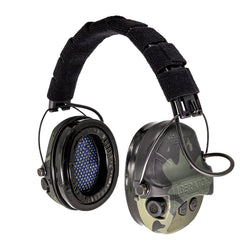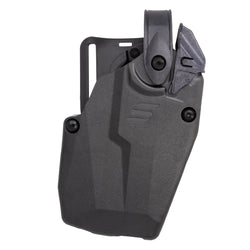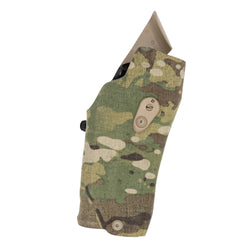At the moment, I’m physically sitting in my local coffee shop drinking my favorite blend from Cactus Creek Roasters working on my computer. Mentally, I’m thinking of the woods and the upcoming deer seasons back in Connecticut and here in North Carolina.
As of this morning, opening day is fewer than 30 days away and I’m itching. I’ve been known to say “deer season is year round” since we are constantly scouting and observing behavior but legal hunting season with a loaded firearm or bow is the time of year when it all comes to a head.
If you are like me, you have started your prep and you will make it out on opening day come hell or high water. If you aren’t like me but want to know what you can do to get ready ahead of time, here are some pointers before that ten pointer stands in your sights.
Sight In/Confirm Zero

If the last time you fired your rifle or shot your bow was last season, it’s time to get back on paper and confirm your zero. It is very easy to let complacency set in and believe your shot will be minute of deer at 100 yards but the reality is, you don’t know unless you know.
In the year since you put your rifle away, humidity changes, an accidental bump, or even an irresponsible family member messing with your turrets/dials could all be responsible for your shot to be off. You don’t need to shoot hundreds of rounds preseason but you do need to know your rifle is capable of grouping five shots in a small cluster at realistic distances you will encounter.

Permethrin Clothes
When I moved to North Carolina and experienced my first early season hunt, I learned just how hot and buggy it can get in a tree stand in early September. Bug sprays are an option but I don’t like using DEET on my skin and I’ve damaged enough synthetic gear by accidental exposure to it. I also know waving the horseflies and mosquitos from my face is a motion deer will see long before you see them.

Instead, I use permethrin to treat my clothes. My method includes spraying the front and back of each piece of camouflage and spending a little extra attention to the neck, wrists, and ankles. Permethrin works against flies, ticks, and chiggers, and it lasts for most of the season before reapplying. To really help it soak in, I leave the clothes in a bin for 24 hours to let the fumes make their way throughout.
Kit Layout

I’ve been using the same hunting pack for years and I know exactly where certain items are like the emergency medical kit, headlamp, game bags, etc.
Even though those items are where they should be, I always do a layout of my kit and keep track of what needs some TLC. Electronics and flashlights get new batteries, hanks of cord are inspected and recoiled, emergency snacks are replenished based on shelf life, and the overall pack is inspected for wear and tear.
Scout Areas

Prior to hunting season, I like to inspect the area where I’ll be and let all my senses take it in. I enjoy getting up in the stand and looking around, feeling the direction of the wind, and listening for any movement. This also gives me an opportunity to visualize what a shot would look like, how I would have to contort my body if not in my expected left, right, and far limits, and note how I’d want to stage gear around me.
As the season gets closer, I try to use only one trail into an area and one trail out minimizing my presence. I look for fresh scrapes, bedding areas, and food plots. As I discover more, the anticipation for the season gets greater and greater.

Stage Stands, Cameras, Etc
An important aspect of east-coast hunting is hunting stand placement. Part of preseason prep is making sure stands, cameras, and shooting lanes are addressed.
A basic folding saw or small hatchet will help you remove small branches that could deflect your shot. Loading straps and supports on your hunting stand will prevent some of the creep that could spook animals opening day morning.
Weights

Hunting isn’t just pressing the trigger or letting an arrow loose. East coast hunters tend to drag out deer while west-coasters pack it out. In either case, physical fitness plays an important role.
Prior to hunting season, cutting bodyweight will mean you won’t carry as much through the field. Cardio will help you walk further and with more weight. Pulling exercises like deadlifts, carries, and drags will help you move animals prior to butchering. Rucking with weight will help simulate packing out an animal and help condition you for the rigor of the field.
An added benefit of pre-season physical training is it helps you identify any issues with your kit. Hotspots in boots are better discovered before they lead to blisters in the field.
Sharpen Knives
Sharp is a relative term. Until someone uses a truly sharp knife, they don’t know their knife isn’t as dull as it is. For those using interchangeable razor-blade knives, swapping out a dull blade for a sharp one is a way to avoid the grind stone. For those who own more traditional knives. Like the rest of your gear from last season, you may have finished processing your game, cleaned off the blood, fur, and fat, and put your knife away in less than an optimal condition.
Just like you press check a firearm, you can press check your knives. Running the edge of the knife at an angle against the body of a Sharpie marker or ball-point pen is a test of the edge. If the knife skips off, chances are, you have a roll or flat spot in the blade. There are many ways to address this and sharpening can be a highly contested topic. Bottom line, make sure your blade is sharp for safety.

Create Freezer Space
The top shelf of my refrigerator is currently the location of a thawing rear hind quarter from a deer taken last December. This time of year, just a few weeks before hunting season, is when I start rotating out the meat from last year. That deer leg will meet my grinder this weekend and I’ll package it for quick consumption. It also will be distributed to friends and family who may not have any deer left from the previous year.
As I clear out the deep freezer chest, I take inventory of my butcher paper, plastic wrap, vacuum pack supplies, and masking tape. Prior to hunting season, I want to make sure my usual routine of bringing in primal cuts to my kitchen counter isn’t interrupted. Just like I set myself up for success in the field, I want to do the same in my home kitchen and the freezer in my garage.

Count The Days
I might commit blasphemy and say at some point you just have to stop prepping for hunting season and wait. I write this as I still check weather reports, monitor discussion boards, and talk with my friends in the days leading up to the season.
As I mentioned, we are under 30 days at this point. But believe me, I know the exact number of days until I throw on my camo, get into the blind, and hope the conditions are right to drop a trophy.
I’m counting the days and I can do so knowing my pre season preps are in order. If you have a season coming up, are you ready? You should be.









